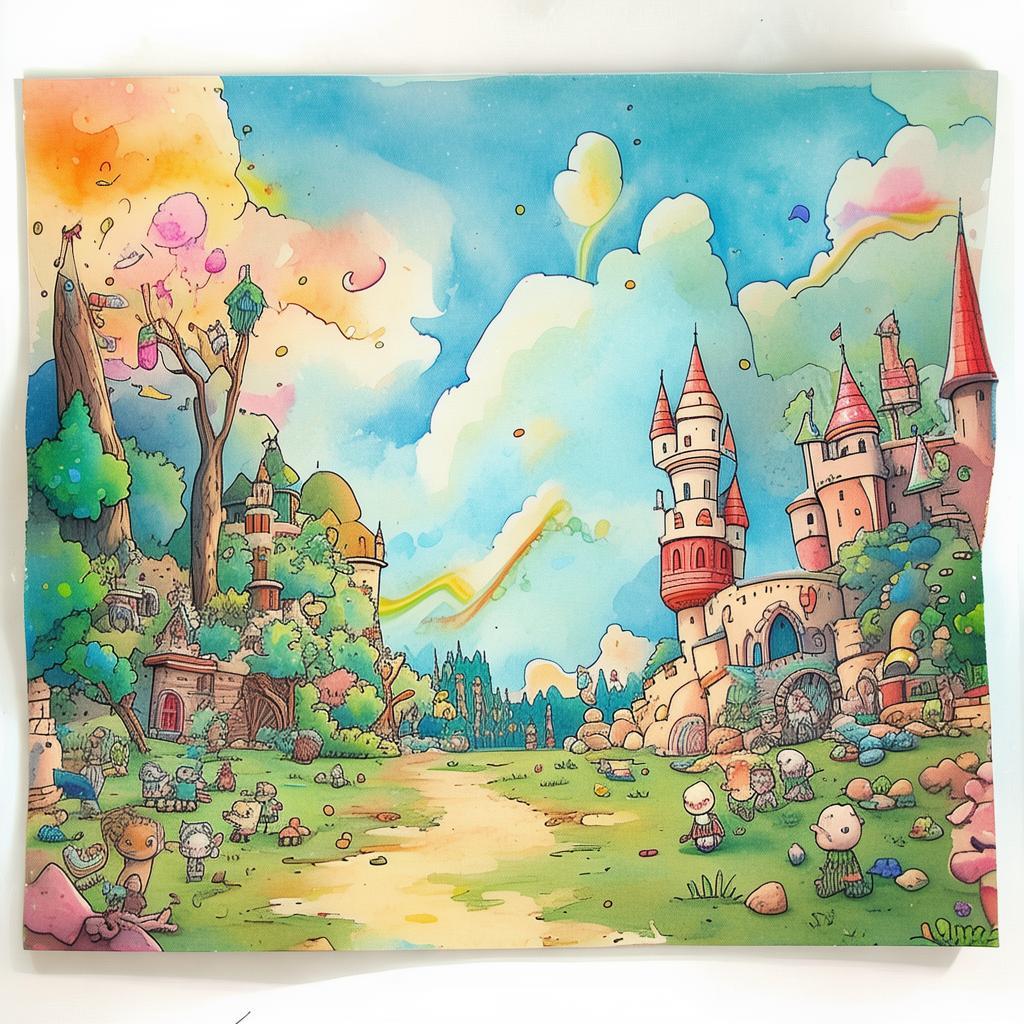The Moonlit Symphony: Kizito's Melodious Misfortunes
Once upon a time in the quaint village of Melodywood, nestled between rolling hills and whispering rivers, there lived a young boy named Kizito. Kizito was known throughout the village for his bright eyes and his love for music, especially the violin. His fingers danced gracefully over the strings, creating melodies that seemed to weave their way into the very soul of those who heard them.
One starry night, as the silver moon cast its gentle glow over the village, Kizito was walking home from a friend's house. The night air was crisp, and the stars twinkled like diamonds scattered across the velvet sky. As he wandered along a narrow path, he stumbled upon an old, dusty violin case half-buried in the grass. His heart leaped with excitement; he had always dreamed of owning a violin of his own.
With a mixture of awe and curiosity, Kizito opened the case. Inside, he found a beautiful, old violin with a rich, dark finish and intricate carvings that told tales of its ancient past. The instrument seemed to hum with a life of its own, and as Kizito touched the strings, the melody that emerged was unlike anything he had ever heard. It was a song that told of joy and sorrow, of triumph and defeat, of dreams and the courage to chase them.
As days turned into weeks, Kizito carried the violin with him everywhere. He practiced for hours each day, letting the melodies flow from the old instrument, finding solace in the music that seemed to speak to him in ways words could never convey. But as he played, he began to notice something odd. The melodies that once brought him joy now seemed to carry a hint of sadness, as if the violin was sharing the sorrows of its previous owners.

One evening, as Kizito played a particularly melancholic piece, the violin's strings seemed to vibrate with a deeper resonance. He felt an overwhelming sense of loss, as if the violin was telling him a story of a heartbroken musician, whose music was a bittersweet reflection of their sorrow. Touched by this discovery, Kizito decided to find the violin's original owner and learn their story.
Kizito's search took him on a journey through the annals of Melodywood's history. He visited the old town hall, where the village elder kept a detailed archive of the community's past. Through the pages of yellowed newspapers and faded photographs, he discovered that the violin belonged to a famous composer named Elara, who had once lived in the village. Elara was a woman of great talent and compassion, whose music brought solace to many during a time of great hardship.
The story of Elara's life was filled with triumphs and heartbreaks. She had lost her family in a tragic accident, and her music was a way for her to cope with her grief. Kizito realized that the violin was not just an instrument, but a time capsule, holding the echoes of Elara's life and love.
Determined to honor Elara's legacy, Kizito began to compose music of his own. He drew inspiration from the melodies he played on the old violin, infusing them with his own spirit and the lessons he had learned about life, love, and loss. As his music grew in popularity, he found that his own sorrows began to heal, and his melodies brought joy to those who heard them.
One night, as Kizito played a concert under the same moon that had guided him to the violin, the crowd was captivated. They listened to the music, their hearts touched by the melodies that had once echoed the sorrow of Elara's heart. But as the final note resonated through the night, a new melody began to weave its way through the air—a harmonious blend of old and new, sorrow and joy.
In that moment, Kizito understood that the violin was not just a relic of the past; it was a living thing, a vessel for the voices of all those who had played it before. And as he continued to play, the old violin became his companion, a partner in his musical journey, and a symbol of the enduring power of love and hope.
And so, the village of Melodywood was filled with music once more, a symphony of melodies that played to the hearts of all who lived there. Kizito's music became a beacon of hope, a testament to the idea that even in the face of sorrow, the human spirit could find a way to rise, to sing, and to dance in the light of the moon.
The Moonlit Symphony: Kizito's Melodious Misfortunes was a tale that would be told for generations, a story of courage, of healing, and of the unbreakable bond between music and the soul.
✨ Original Statement ✨
All articles published on this website (including but not limited to text, images, videos, and other content) are original or authorized for reposting and are protected by relevant laws. Without the explicit written permission of this website, no individual or organization may copy, modify, repost, or use the content for commercial purposes.
If you need to quote or cooperate, please contact this site for authorization. We reserve the right to pursue legal responsibility for any unauthorized use.
Hereby declared.









